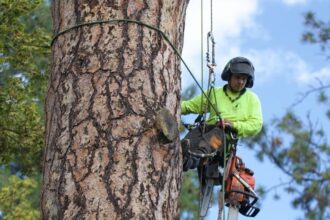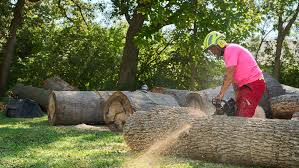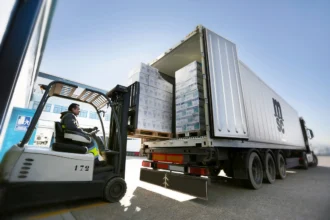When protecting waterfront properties, choosing the right seawall material is crucial. Natural erosion, rising water levels, and storm surges threaten property value, but vinyl seawalls have emerged as an innovative, long-lasting solution. But what makes them special? Are they a better choice than traditional materials like wood, concrete, or steel?
This blog dives into the benefits of vinyl seawall installations, highlighting why they’re gaining popularity among homeowners and contractors. Whether you’re considering a seawall for your property or curious about advancements in shoreline protection, this article will equip you with everything you need to know.
What Is a Vinyl Seawall?
A vinyl seawall is a protective barrier made from high-grade PVC panels that shield waterfront properties from water damage, erosion, and tidal forces. Unlike traditional seawall materials (such as wood or metal), vinyl boasts a sleek, modern design and offers unmatched durability.
These panels are designed to withstand the elements and are often used in both residential and commercial waterfront settings. Thanks to their corrugated structure, vinyl seawalls combine effective water resistance with a streamlined, attractive appearance.
Why Are Vinyl Seawalls a Better Choice?
Vinyl seawalls are disrupting the status quo in shoreline protection. Here’s why they outshine alternatives like wood and concrete:
Durability That Withstands the Test of Time
Vinyl stands up to one of nature’s harshest enemies: water. Unlike wood that can rot or metal that corrodes, vinyl is highly resistant to saltwater and harsh weather conditions. Properly installed, a vinyl seawall can last 50 years or more with minimal upkeep.
Low Maintenance, High Peace of Mind
Wouldn’t it be great to install something and forget about it? Vinyl seawalls require little to no maintenance. You’ll never need to worry about repainting or sealing the material, saving both time and money.
Resistant to UV Rays and Weathering
Vinyl is engineered to resist UV rays, which means it won’t weaken or fade when exposed to sunlight over long periods. Additionally, it won’t crack during extreme winters or warp in blazing heat, making it perfect for diverse climates.
Cost-Effective Over the Long Run
Even though the upfront costs of vinyl seawalls can be higher than other materials, their longevity and minimal need for repairs make them a cost-effective choice in the long term. Think of it as an investment that pays off decade after decade.
Aesthetic Appeal
With sleek lines and a tidy finish, vinyl seawalls enhance the visual appeal of shorelines. Whether you’re designing a backyard oasis or maintaining a marina, vinyl’s clean look adds sophistication to your waterfront property.
How Vinyl Seawalls Are Environmentally Friendly
More homeowners are becoming conscious of the environmental impact of their choices. If sustainability matters to you, vinyl seawalls make a great case. Here’s how:
- Eco-friendly production: Modern vinyl seawalls are often made from recycled materials, reducing overall carbon footprints.
- Reduced need for toxic chemicals like preservatives and paints (often required for wood or steel alternatives).
- Erosion control benefits that protect nearby marine ecosystems. By minimizing sediment displacement, vinyl seawalls help preserve aquatic habitats.
Common Myths About Vinyl Seawalls
Despite their many advantages, vinyl seawalls can be misunderstood. Let’s bust a few of the most common myths:
“Vinyl isn’t strong enough to handle storms.”
Not true! Vinyl can withstand forces from significant storms and heavy tides. Modern vinyl seawalls are reinforced by structural steel or concrete anchoring systems, providing unrivaled strength.
“Vinyl seawalls look artificial.”
While aesthetics are subjective, vinyl seawalls come in different finishes and colors to blend seamlessly with natural landscapes. Their polished look is a favorite for design-conscious homeowners.
“Vinyl won’t last as long as concrete or steel.”
This misconception is outdated. Innovations in PVC technology have enabled manufacturers to create high-performance vinyl panels capable of lasting up to five decades or longer.
The Installation Process of a Vinyl Seawall
Ever wondered what goes into installing a vinyl seawall? While each project varies based on location and scope, the typical process involves these steps:
Step 1: Site Assessment
Engineers or contractors will first assess your property to map potential risks like erosion patterns, soil conditions, and water activity.
Step 2: Designing the Seawall
Using the assessment, a tailor-made installation plan is created, ensuring that the seawall complements your landscape’s dimensions and water access points.
Step 3: Driving the Vinyl Panels
The vinyl sheets are driven into the soil using specialized equipment, creating an erosion barrier. These sheets interlock seamlessly, forming a watertight structure.
Step 4: Anchoring
To enhance stability, anchoring systems like tiebacks or deadman anchors are installed within the soil. This prevents shifting over time, ensuring your seawall stays intact no matter what.
Step 5: Finishing Touches
Once the structural components are complete, the seawall is topped with an attractive cap, which could be concrete, metal, or even timber, giving it a polished final finish.
While DIY enthusiasts might attempt minor repairs on small structures, vinyl seawall installation is a professional-grade task. Working with experienced contractors guarantees precision, compliance, and safety.
Where Are Vinyl Seawalls Most Useful?
Vinyl seawalls are incredibly versatile and can be used in several environments:
- Private Homes: Protecting residential properties with stunning waterfront views.
- Commercial Developments: Supporting marinas, resorts, and parks.
- Flood Zones: Mitigating risks for towns prone to seasonal flooding.
- Coastal Infrastructure: Securing docks, piers, and other essential setups.
Is Vinyl Seawall Installation Right for You?
If you’re looking for a low-maintenance, long-lasting, and eco-conscious solution, vinyl could be the perfect choice for your property. Not only is it highly durable, but its sleek look and resistance to harsh elements make it a standout option in modern shoreline protection.
Start Protecting Your Waterfront Property Today
Entrusting vinyl seawall installation for your property isn’t just about preventing erosion; it’s about preserving the beauty and value of your shoreline for years to come. A well-built seawall transforms your waterfront into a safe, functional, and visually stunning space.
If you’re ready to explore vinyl seawalls as a solution for your property, connect with a trusted seawall contractor for a consultation. Take the first step toward protecting your investment today.

















